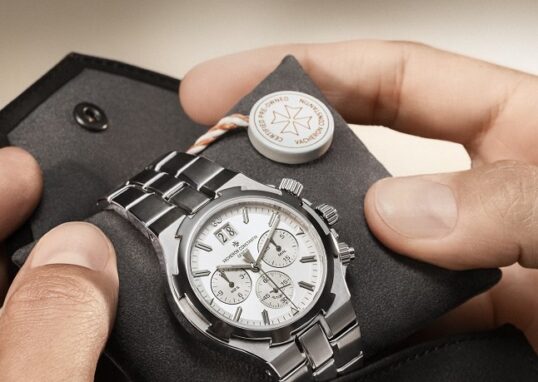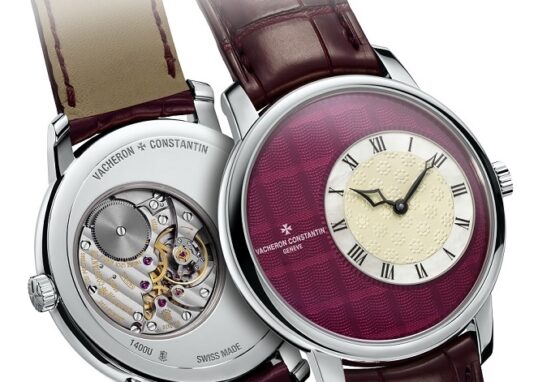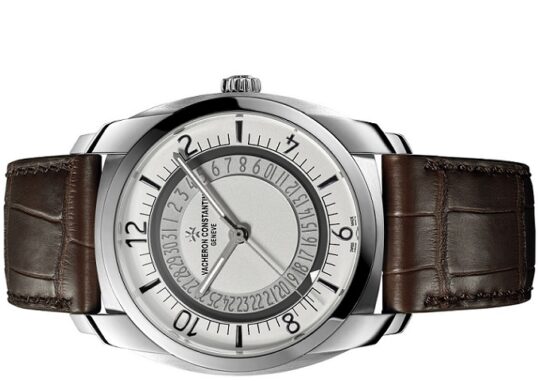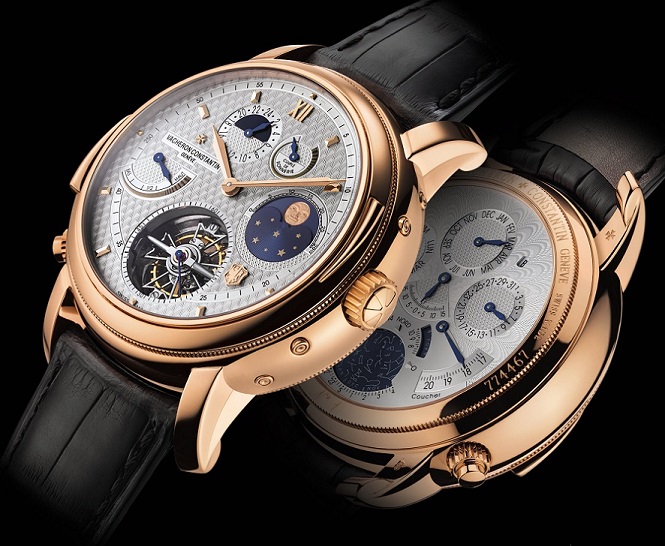
Here’s news from Watches and Wonders Geneva about replica Vacheron Constantin, the high-end watch manufacturer celebrating its 270th anniversary this year. Having started 2025 faster than anyone else by unveiling the stainless steel version of the Historiques 222 last January, Vacheron Constantin has overwhelmed other maisons in terms of technology and know-how by unveiling a masterpiece of its own that it has been secretly working on for years at Watches and Wonders.
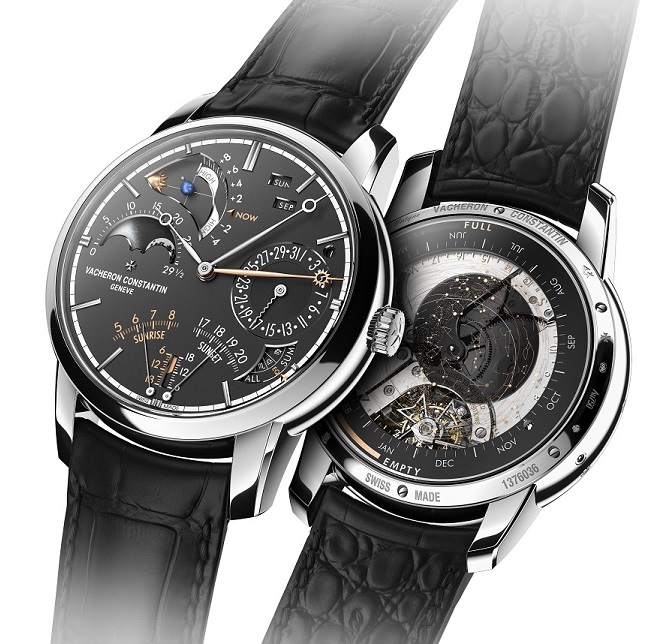
The Maison, whose mantra since its founding in 1755 has been “Do better if possible, and that is always possible,” has unveiled this year the Les Cabinotiers Solaria Ultra Grand Complication – La Première watch, featuring a whopping 41 complications. As you know, Vacheron Constantin is one of the most prestigious masters in the world of Haute Horlogerie (High Watchmaking), adept at all types of complications.
Beginning with the creation of a pocket watch with 13 complications for King Fouad I of Egypt in 1929, the Tour de l’Île with 16 complications was created in 2005, and in 2015, to celebrate the brand’s 260th anniversary, the Ref. The Maison’s enthusiastic challenges continued with the 57260, Les Cabinotiers Celestia Astronomical Grand Complication in 2017, which brought together a total of 23 astronomical complications; Les Cabinotiers Armillary Tourbillon Perpetual Calendar – Planetaria in 2021, which creatively combines several different complications under the theme of “Le Temps Celeste”; and Les Cabinotiers – The Berkley Grand Complication in 2024, which succeeds its predecessor 57260 and is the world’s most complicated mechanical replica watches with a whopping 63 complications. And this year, in celebration of its 270th anniversary, Les Cabinotiers Solaria Ultra Grand Complication – La Premiere decorates another proud page of its history.
Comprising a total of 41 complications, Les Cabinotiers Solaria Ultra Grand Complication – La Premiere is a watch that is on par with other timepieces such as Patek Philippe’s Grandmaster Chime (2014) with 20 complications, Audemars Piguet’s Code 11.59 by Audemars Piguet Ultra-Complication Universelle RD#4 (2023) with a harmonious composition of 23 complications, Jaeger-LeCoultre’s Hybris Mechanica à Grande Sonnerie (2009) with 26 complications, and Franck Muller’s Aeternitas Mega 5 (2009) with 36 complications. More complicated than the most complicated wristwatches in watchmaking history, it set a record for the world’s most complicated wristwatch at the time of its debut. Eight years of research and development, 13 patent applications, and 1,521 components are all testament to the dedication of the Maison to this extraordinary novelty.
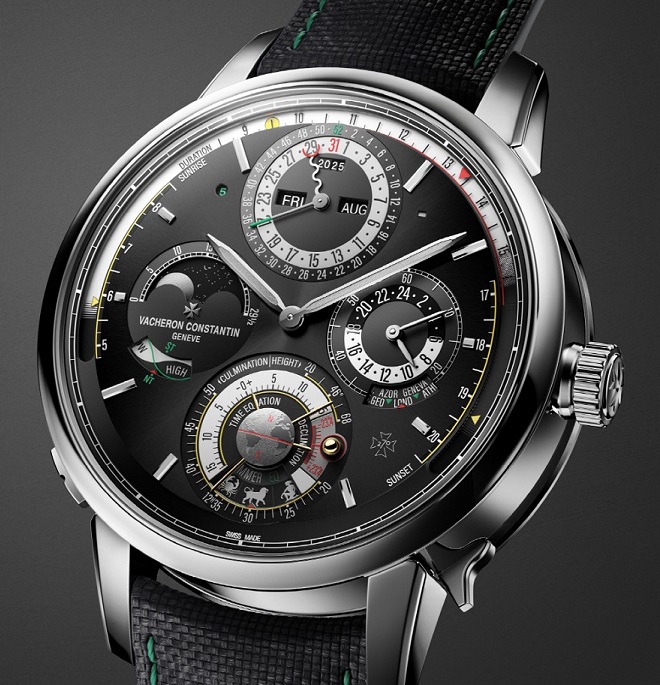
Christian Selmoni, Style and Heritage Director at Vacheron Constantin, says: “As the most complex wristwatch in the history of watchmaking, with an unprecedented 41 complications, the mechanism had to be arranged as logically and concisely as possible. The main objective was to integrate all the main complications – timekeeping, calendar, chronograph and chimes – on a single base plate, while concentrating the astronomical functions on an additional plate. This construction allowed us to create a wristwatch with harmonious proportions. The various innovations incorporated in this watch are related to solutions found to increase energy efficiency without increasing its size. This is evident in the 72-hour power reserve.”
It goes without saying that a completely new manual manufacture caliber 3655 was developed for Les Cabinotiers Solaria Ultra Grande Complication. With 41 complications housed in a movement measuring just 36 mm in diameter and 10.96 mm thick (since all astronomical functions are integrated into a module just 2.8 mm thick), the watch is also extremely compact (case diameter 45 mm and thickness 14.99 mm) given its functions. The double-sided structure displays the 41 functions, but the Maison adds that special care was put into ensuring readability.
It is particularly impressive that the counter at 12 o’clock displays the four-digit year, day of the week, and month on digital discs, the date on a snake-like pointer hand, and the week from 1 to 52 on a green-accented hand at the end. It is amazing that the perpetual calendar function is integrated into one small counter. And of the two outer apertures, one intuitively displays the day of the week with numbers from 1 to 7, and the other leap years.
The counter at 3 o’clock displays a second time zone along with a 24-hour day/night indicator, and performs world time indication by pointing out the names of the cities representing the 24 major time zones around the world with a rotating disc and a red tip. At this time, the city names linked in 1-hour units can be set together by adjusting the single corrector located on the side of the case. Vacheron Constantin has already applied for a patent regarding the ultra-compact system that can separate local time and home time with a differential gear system rather than the commonly used spring type. In addition, the counter at 9 o’clock displays the highly sophisticated astronomical moon phase that theoretically will not need adjustment for 122 years, and at the bottom, the high tide height above mean sea level, which is closely related to the moon, is displayed in a unique graph form (Mareoscope) to complement the lunar cycle.
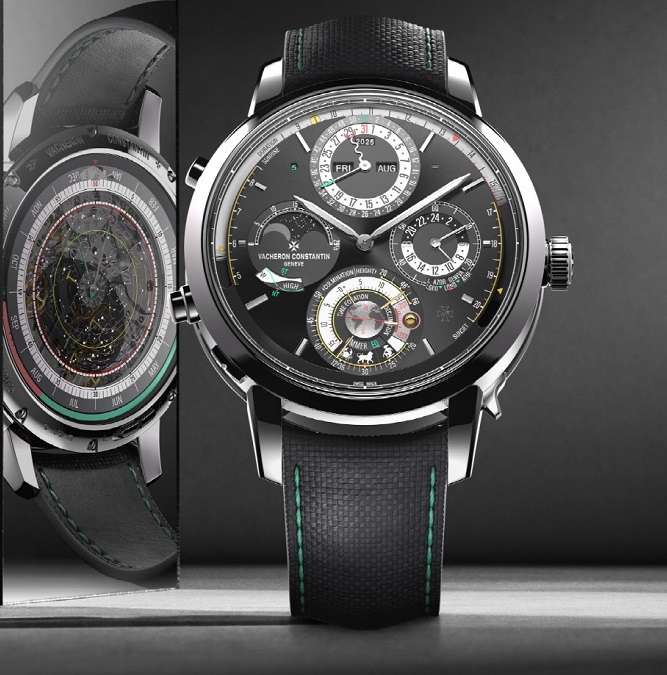
Meanwhile, the counter at the 6 o’clock position includes solar time and the equation of time, which shows the change (difference between true solar time and mean solar time) due to the movement and observation of the sun. Because the Earth’s orbit around the Sun is not circular but elliptical and the Earth’s axis is tilted about 23.4° with respect to the ecliptic, the time it takes for the Sun to pass through the zenith varies throughout the year. Since a day based on solar time (actual) and a day based on civil time (average) differ by -16 to +14 minutes depending on the time of year, they only match four times a year (spring/autumn equinox and summer/winter solstices).
